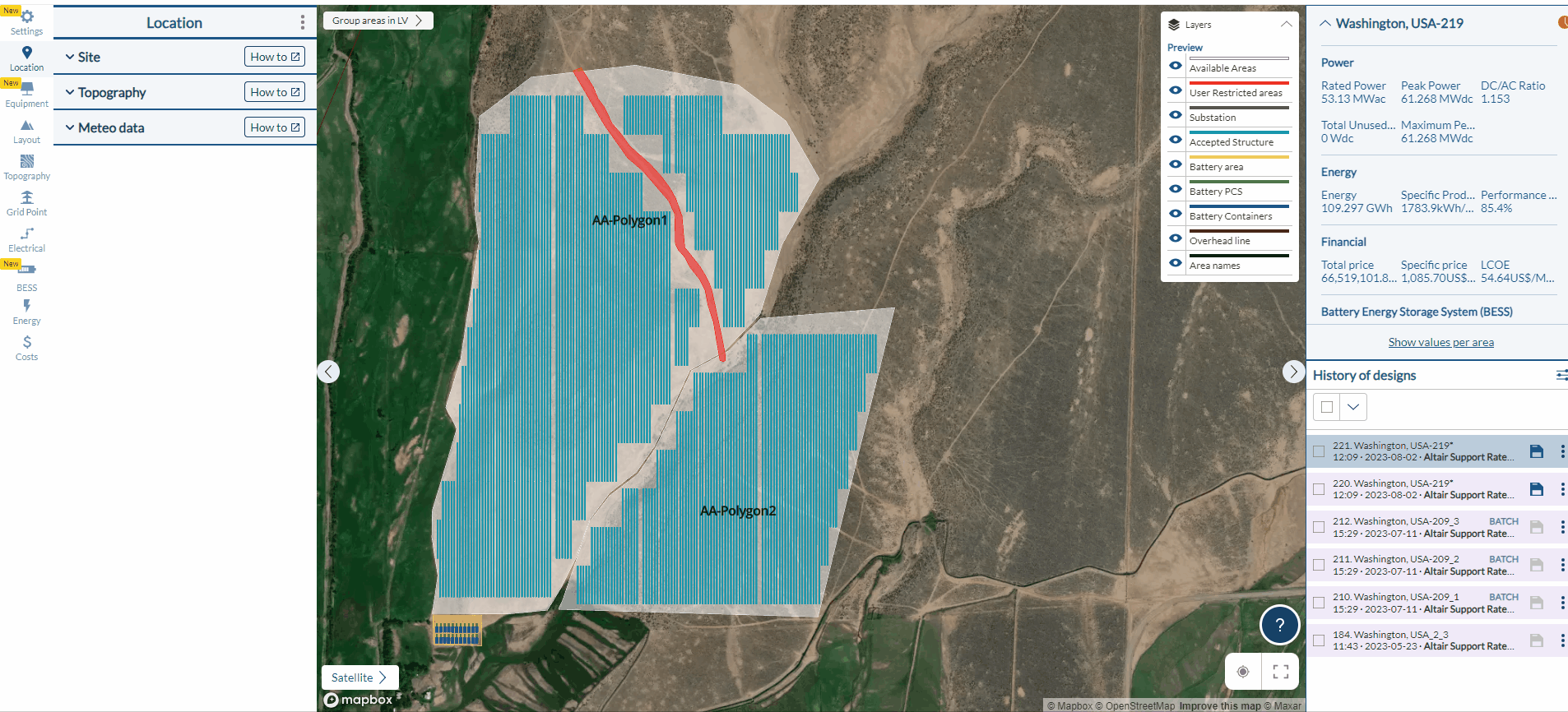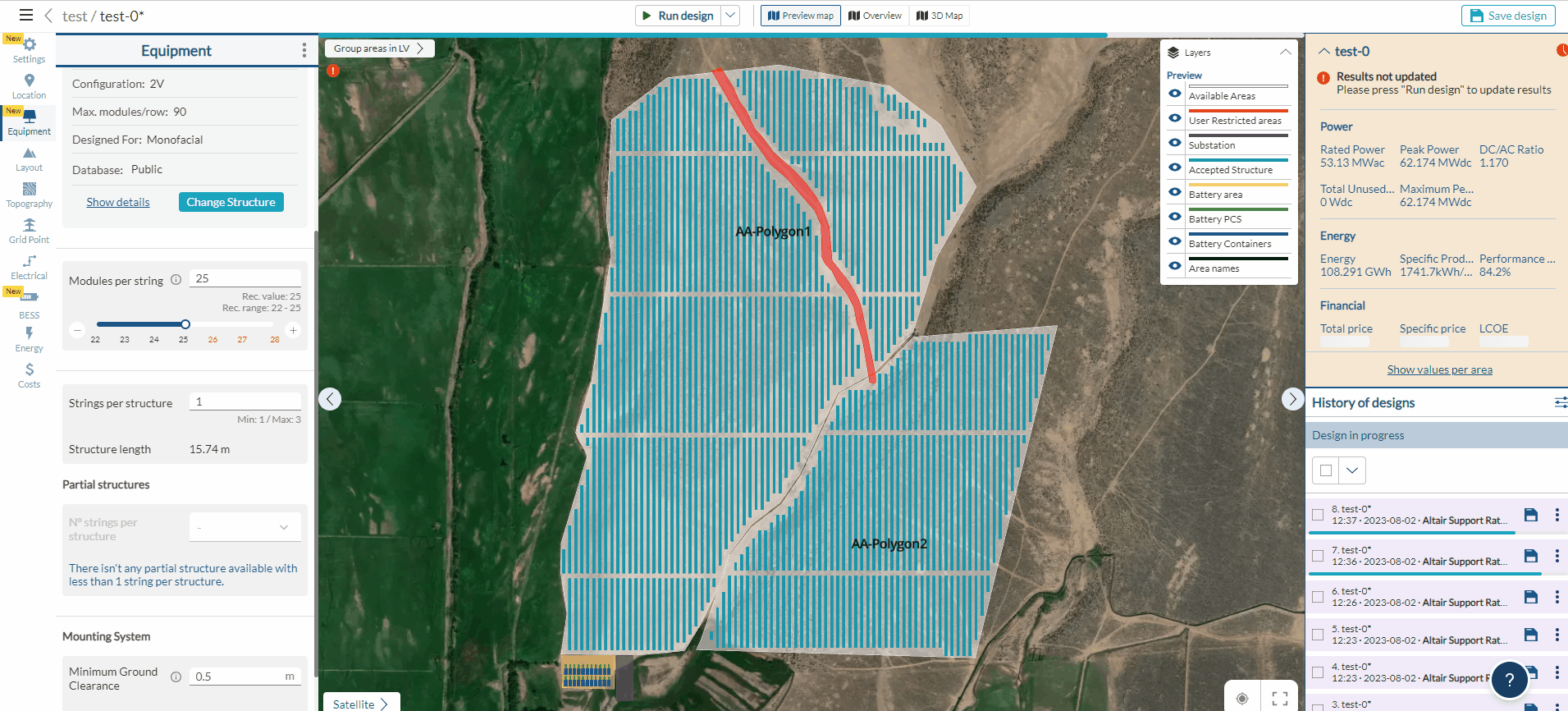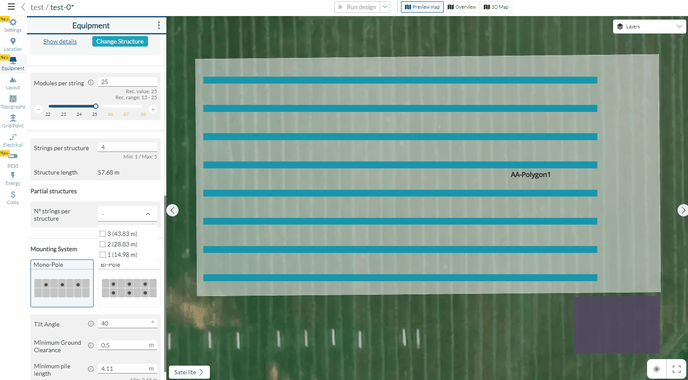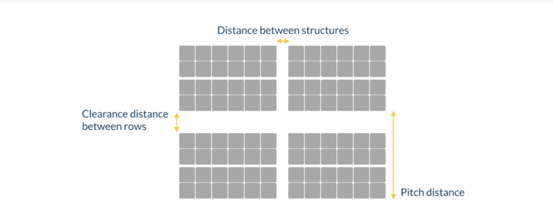Learn how to personalize the structures of your PV plant using RatedPower.
Introduction
One of the main components of any solar PV plant is the structure type used. In RatedPower, you can opt between single-axis trackers, fixed structures, or East-West (E-W) structures with different configurations. But that’s not where it ends. Our software also allows you to configure different parameters to make sure that your structures are personalized to your needs.
Trackers, Fixed Structures, or E-W Structures?
The process starts right at the bottom of the “Equipment” tab. Here you can select among trackers (following the direction of the sun), fixed structures (facing south), or E-W structures (one module facing East and one facing West). Our database includes both monofacial and bifacial trackers from different manufacturers with various configurations, such as the number of modules per row. It also includes mono-post and bi-post fixed structures with configurations ranging from 1V to 6V and from 2H to 12H, all with either 0 mm or 10 mm separation between the modules.

Number of Modules per String and Strings/Structure
You will automatically get recommended values for the number of modules per string, but of course, you can modify it to your needs. You will also be able to change the pitch distance, and the tilt angle and select the number of strings per structure.
The number of modules per string is calculated based on:
- The technical properties of the modules: open-circuit voltage at standard test conditions (STC) and module temperature coefficient of the voltage at open circuit (Voc).
- The technical properties of the inverters: minimum voltage of the maximum power point tracker (MPPT) and the maximum input voltage.
- The minimum historical temperature of the site.
- The maximum historical temperature of the site.
In case the user wants to select a value outside the calculated range, they can also do so by typing the value of modules per string that they want.
The number of strings per structure is calculated based on:
- Number of modules per string.
- Maximum number of modules allowed by the structure.
- Dimension of the modules.
If the general strings per structure is above 1, the user can also have structures of different lengths (partial or broken structures). This will enable the user to select an option of max. five of the available (Nº of strings/structure) options.
One of the greatest advantages of using this feature is that it allows the system to be maximized by fitting as many complete structures as possible, and also add any smaller one(s) it can fit.

Here's an example of a design applying different values for Nº of strings/structure on the partial structures

In addition, the application takes into account that the number of modules per string and the number of strings per structure that are chosen must comply with the structural limitation of modules per row.
It is important to understand this point in order to design the PV plant adequately. For additional information, you can check our Electrical Methodology.
In case a linked-row tracker is selected, the user can select the maximum number of structures per said linked-row tracker.
Recommended Pitch Distance
When it comes to the pitch distance, the recommended value tries to ensure around 40% of GCR in the case of trackers and at least four hours of non-shaded production on the shortest day of the year in the case of fixed structures. In case you prefer to design your PV plant based on the clearance distance instead, you will have this info available right next to the pitch distance.
Recommended Tilt Angle
Tilt angle is a parameter exclusive to fixed structures. The software recommends a certain value based on the site latitude as follows:
- If the site latitude is below 5º, the recommended tilt = 5º.
- If the site latitude is between 5º and 10º, the recommended tilt = latitude.
- If the site latitude is between 10º and 20º, the recommended tilt = latitude * 0.9.
- If the site latitude is above 20º, the recommended tilt = latitude * 0.85.
If the user changes the tilt angle, the pitch distance will be modified accordingly in order to guarantee at least four hours of unshaded operation during the shortest day of the year as mentioned previously.
What is the distance between structures?
The distance between structures is the distance between consecutive trackers or fixed structures. For trackers, it is on the North-South axis, whereas for fixed structures, it is on the East-West axis. By default, RatedPower recommends a distance of half a meter (0.5 m) for trackers and zero meters (0 m) for fixed structures. These values, nonetheless, can be modified as the user wants.
For a better understanding of the difference between the pitch distance and the distance between structures, the two following images can be observed for Fixed structures and Trackers.

![]()
The Minimum Ground Clearance
You can also change the minimum ground clearance which is the minimum distance between the ground and the lower part of the structure. In the case of trackers, it is calculated at the maximum tracking angle of the chosen tracker.
![]()
For any other questions or more information regarding this topic, you can contact us at: support@ratedpower.com
